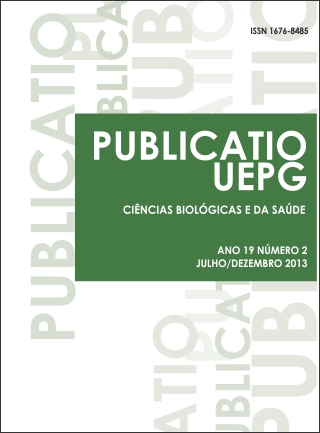Whey as source of peptides with high antioxidant activity: use of a pancreatin and an Aspergillus sojae protease
DOI:
https://doi.org/10.5212/publicatio%20uepg.v19i2.5415Palavras-chave:
Proteínas lácteas, Hidrólise, Atividade antioxidante, Protease de Aspergillus sojae, PancreatinaResumo
The use of enzymes in the hydrolytic process may release bioactive peptides from food proteins. A pancreatin and an Aspergillus sojae protease were the proteases used in this study for obtaining whey peptides with high antioxidant activity (AnAc), at enzyme:substrate (E:S) ratios of 0.5:100, 1:100, 2:100, 3:100, 4:100 and 8:100. The DPPH (2-difenyl-1-picryl-hydrazil), the deoxyribose and the pyrogaloll methods were used for evaluating the AnAc. The highest AnAc were reached at an E:S ratio of 8:100 by using the pancreatin (60.67%) and the A. sojae protease (59.70%). The ability to use a low E:S ratio for reducing the costs for scaling-up the process was observed for the Aspergillus sojae protease with the deoxyribose and pyrogallol methods because the highest AnAc were obtained with an E:S ratio of 2:100 (P3: 58.77% and 47.18%, respectively).Downloads
Downloads
Publicado
Edição
Seção
Licença

Este obra está licenciado com uma Licença Creative Commons Atribuição 4.0 Internacional.
Esta licença permite que outros distribuam, remixem, adaptem e criem a partir do seu trabalho, mesmo para fins comerciais, desde que lhe atribuam o devido crédito pela criação original. Este posicionamento está de acordo com as recomendações de acesso aberto da Budapest Open Access Initiative (BOAI).


